Why do you need to make website monitoring?
In today’s business environment, a developed IT is no longer a luxury, but rather means of survival. In the context of online business, the website becomes a primary tool for online promotion. It is necessary for such purposes as:
- attracting customers (advertising);
- contacting customers directly (to sell stuff or services).
It is hardly possible to find a truly successful company that does not have own website. As a rule, almost all website owners turn to digital agencies for advertising and business promotion and further such agencies solve all issues. One of the most critical aspects of successful brand promotion is website monitoring. That is why this information will be important not only for business and websites holders but also for agencies that deal with brands promotion.
How to monitor website?
Monitoring website and servers can be configured quite easily. After all, developers already create many individual programs for this, including a free website monitoring tool. Unfortunately, such applications are not always useful. Sometimes it is much more expedient to seek help from professionals who have a thorough knowledge and will help not only to detect but also fix all identified problems. For digital agencies, it is always better to entrust this task to a proven service.
So, as said before, this article will be interested primarily to heads of departments in digital agencies and SEO companies. Here you will find five ways on how to monitor a website and why you need it!
The most significant changes on the website
Google’s search provides services that primarily track server uptime, loading speed, viruses, and other problems but there is one fundamental problem that is not covered by such online services. It’s about monitoring changes on specific pages. Such changes can be very critical for SEO and business promotion in general. Based on years’ experience, we have created a list of variations that are important to track in real time:
- Changing page-indexing status;
- Changing the main meta-tags: title, h1, description;
- Modifying robots.txt file;
- Adding and deleting pages;
- Changing page code status.
The principle of website monitoring
This principle is elementary. The service you choose scans a website every half of an hour compares the new state with the previous one, record all changes in an event log.
The website monitor tool is simple but extremely functional. The data of changes history on a particular page make it possible to conclude in very different areas. Let’s look at each of these applications to fully understand how it works and why we need to do it. For example, we have chosen website monitoring tool – Sitechecker.pro. All the screenshots are taken from real websites, but was hidden to stay up with confidentiality.
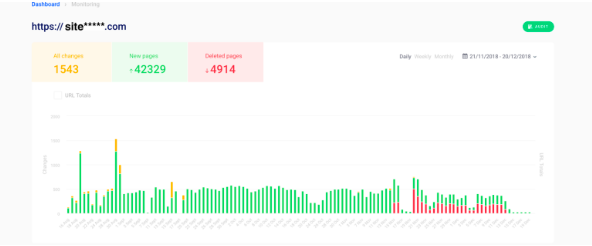
- Learn about the problem with indexing the most valuable pages in 30 minutes

It is the function with which the monitoring tool was born, and now it is considered the most basic and most important one. Letters like those (you can see on a pic) save projects every day. If your company has not used this free website monitoring tool yet, it is just the right time to start now. Just after receiving such a notification, you begin to understand the need for monitoring based. In addition to notifying about changes to the indexing status of a page in the meta tags and robots.txt, you will also receive instant notifications about changes to specific strings in the robots.txt file and changes in a status of page codes.
- Rate the frequency and content of changes made by employees and contractors
With the website monitoring, it becomes possible to assess how actively and correctly adding new pages and conducting experiments on existing ones.
The more brands your company promotes, the more useful this application is. It will be most valuable for project managers in agencies and SEO companies.
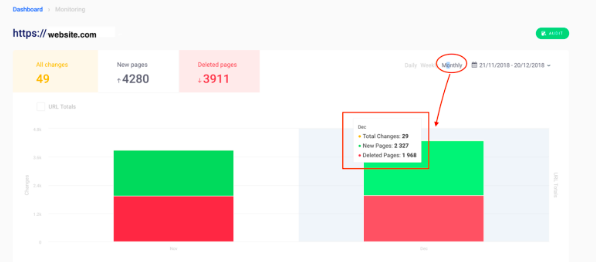
- Identify suspicious activity on the site
Sometimes mistakes made of laziness, inattention, ignorance, and another time it happened because some hackers tried to “hack” a website. Many hackers can use sites for own purposes, and it can be hazardous for the whole company reputation and client’s business as well. Pay attention to a global removal/addition of pages which are not covered by your strategy, and take all necessary measures to protect your project.
- Determine the reasons for the growth/decline of positions in search results
Work on a specific web page is carried out at once on many fronts: adding new content and rewriting the old one, testing different material for a title, changing the description, h1 tags, building links from internal and external pages, speeding up page loading, changing a design, etc. In such conditions, the intersection of changes to identify an exact cause of the growth/decline of positions is very difficult. But you can deliberately devote a certain period to experiments only on meta tags.
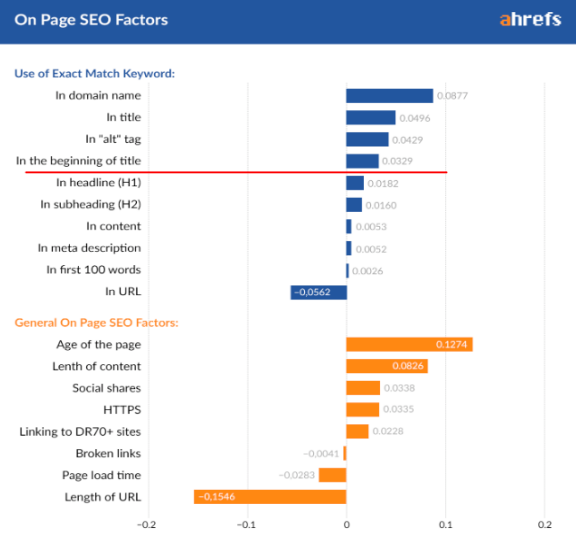
For example, let’s look at experiment made with the main page of keyword tool generator. The experiment was hold on 20th August.
- Before the experiment had been started, our title tag began with phrase “professional keyword suggestion tool.”
- The word “professional” did not have any meaning regarding SEO and was only a positioning tool among competitors.
- Removing it, our title becomes to start with the main keyword – “keyword suggestion tool.”
Of course, you know that an occurrence of a keyword at the very beginning of a title correlates to the success of the Google page ranking.
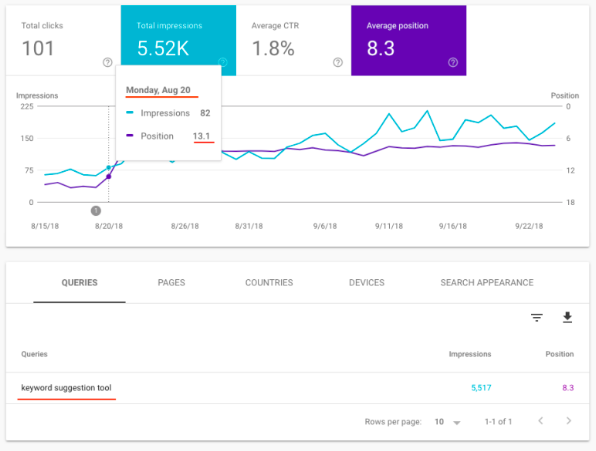
Accordingly to a hypothesis: title, in which a keyword is located at the very beginning, will lead to an increase in positions and an increase in hits in the Google SERP for the main query (URL was on the second page of Google).
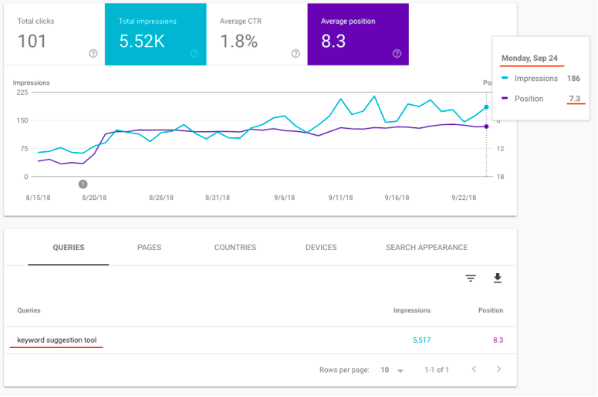
Growth is small but tangible. The average position for the keyword increased by 5.8 jobs, and some impressions increased more than twice.
You can hold a similar experiment in just a few minutes. Find pages that are ranked 10-20 positions, change the title in them, as exampled above and record changes after a few weeks. Thus, by monitoring, you can experiment with the following ranking factors:
- Placing a keyword at the very beginning in the title,
- Direct entry of the keyword in title,
- Entry of a keyword in h1,
- The entrance of the keyword in a description,
- General snippet clickability.
- Explore the dynamics of the development of competitor websites
In addition to the systematic implementation of the previously created content strategy, you can use monitoring data of competitors to search for new exciting ideas. Include in monitoring 3-5 most active competitors, and in a month, you will have enough information to expand your company content marketing strategy.

Hope you don’t have any doubts anymore about how important website monitoring is. It is especially true for big and important projects, and when a lot of people work on it. But we recommend everyone to do it. It is best to do this regularly, because this way you will be able to respond in time to unnecessary changes on the site, and you will be able to understand better all reasons for the abrupt changes in a position of the site or its unique web pages.

